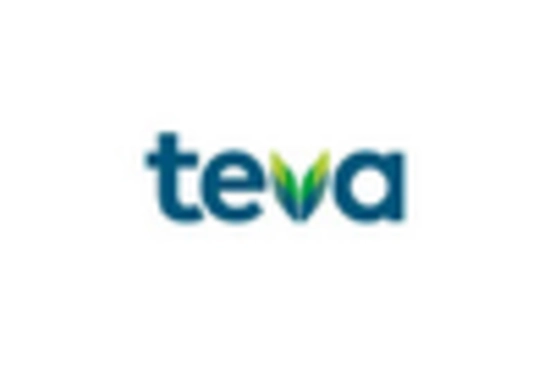Advancements in Treatment Technologies
Technological advancements in treatment options are reshaping the Menopause Treatment Market. Innovations such as telemedicine, wearable health devices, and personalized medicine are enhancing the way menopause is managed. For instance, telehealth services allow women to access specialized care from the comfort of their homes, which is particularly beneficial for those in remote areas. Furthermore, the development of new drug formulations and delivery systems is improving the efficacy and safety of treatments. Market data suggests that the hormone replacement therapy segment is projected to grow at a CAGR of 5.2% over the next five years, driven by these technological advancements. As these innovations continue to emerge, they are likely to attract more women to seek treatment, thereby expanding the Menopause Treatment Market.
Aging Population and Demographic Shifts
The demographic shift towards an aging population significantly influences the Menopause Treatment Market. As life expectancy increases, a larger segment of the population enters menopause, creating a burgeoning market for treatment options. Current statistics indicate that by 2030, nearly 1.2 billion women will be in menopause, which presents a substantial opportunity for growth in the industry. This demographic trend compels healthcare systems to prioritize menopause management, leading to innovations in treatment modalities. The increasing prevalence of menopause-related health issues among older women necessitates a comprehensive approach to care, thereby driving the expansion of the Menopause Treatment Market. As the population ages, the demand for tailored treatment solutions is expected to rise, further propelling market growth.
Increasing Awareness of Menopause Symptoms
The rising awareness regarding menopause symptoms among women is a pivotal driver for the Menopause Treatment Market. As educational initiatives proliferate, more women recognize the physical and emotional challenges associated with menopause. This heightened awareness leads to increased demand for effective treatment options, including hormone replacement therapy and alternative remedies. According to recent data, approximately 75% of women experience menopausal symptoms, which underscores the necessity for accessible treatment solutions. Consequently, healthcare providers are adapting their services to meet this growing need, thereby expanding the Menopause Treatment Market. The emphasis on education and awareness campaigns is likely to continue, fostering a more informed patient base that actively seeks treatment.
Increased Focus on Women's Health Initiatives
The heightened focus on women's health initiatives is significantly impacting the Menopause Treatment Market. Governments and organizations are increasingly recognizing the importance of addressing women's health issues, including menopause. This recognition has led to the implementation of policies and programs aimed at improving access to menopause-related healthcare services. For example, initiatives promoting research and education on menopause are gaining traction, which is likely to enhance the availability of treatment options. Furthermore, the integration of menopause management into broader women's health strategies is expected to foster collaboration among healthcare providers, thereby improving patient outcomes. As these initiatives continue to evolve, they are poised to drive growth in the Menopause Treatment Market.
Growing Demand for Natural and Alternative Therapies
The increasing preference for natural and alternative therapies among women is a notable driver in the Menopause Treatment Market. Many women are seeking holistic approaches to manage menopausal symptoms, favoring options such as herbal supplements, acupuncture, and lifestyle modifications over traditional pharmaceuticals. This trend is partly fueled by a growing skepticism towards synthetic medications and a desire for more personalized treatment plans. Market Research Future indicates that the herbal supplements segment is experiencing a notable rise, with a projected growth rate of 6.5% annually. As more women turn to these alternatives, the Menopause Treatment Market is likely to adapt, offering a wider array of natural products and therapies to meet consumer demand.


















Leave a Comment